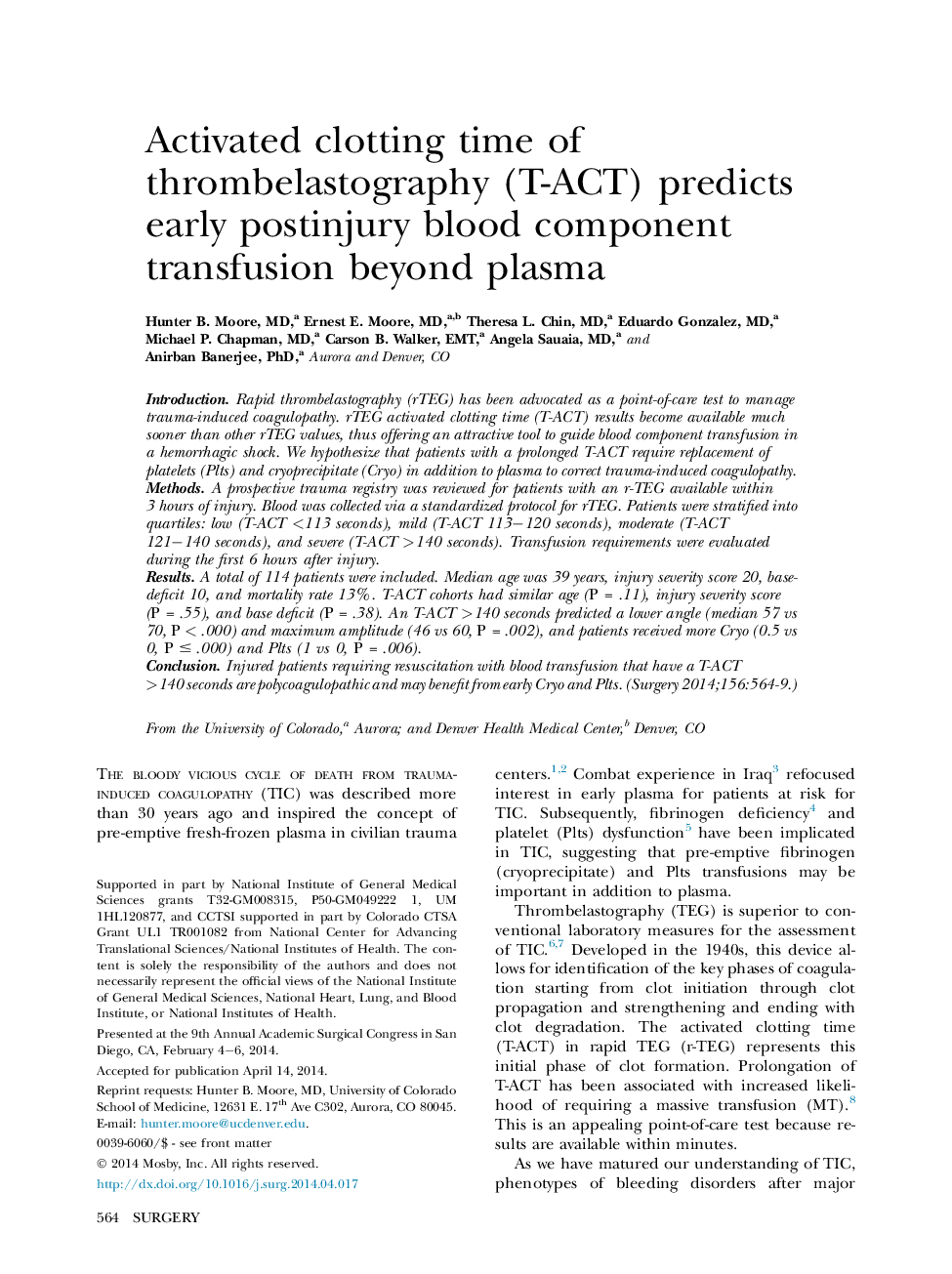| Article ID | Journal | Published Year | Pages | File Type |
|---|---|---|---|---|
| 4307125 | Surgery | 2014 | 6 Pages |
IntroductionRapid thrombelastography (rTEG) has been advocated as a point-of-care test to manage trauma-induced coagulopathy. rTEG activated clotting time (T-ACT) results become available much sooner than other rTEG values, thus offering an attractive tool to guide blood component transfusion in a hemorrhagic shock. We hypothesize that patients with a prolonged T-ACT require replacement of platelets (Plts) and cryoprecipitate (Cryo) in addition to plasma to correct trauma-induced coagulopathy.MethodsA prospective trauma registry was reviewed for patients with an r-TEG available within 3 hours of injury. Blood was collected via a standardized protocol for rTEG. Patients were stratified into quartiles: low (T-ACT <113 seconds), mild (T-ACT 113−120 seconds), moderate (T-ACT 121−140 seconds), and severe (T-ACT >140 seconds). Transfusion requirements were evaluated during the first 6 hours after injury.ResultsA total of 114 patients were included. Median age was 39 years, injury severity score 20, base-deficit 10, and mortality rate 13%. T-ACT cohorts had similar age (P = .11), injury severity score (P = .55), and base deficit (P = .38). An T-ACT >140 seconds predicted a lower angle (median 57 vs 70, P < .000) and maximum amplitude (46 vs 60, P = .002), and patients received more Cryo (0.5 vs 0, P ≤ .000) and Plts (1 vs 0, P = .006).ConclusionInjured patients requiring resuscitation with blood transfusion that have a T-ACT >140 seconds are polycoagulopathic and may benefit from early Cryo and Plts.
